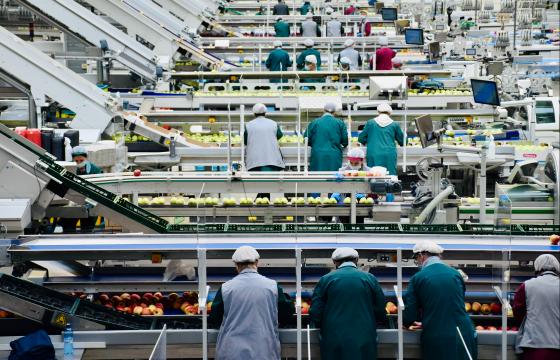
Read our latest blog post below to see how IoT can be a key player in reducing food waste.
Each year, an estimated one third of all food produced – equivalent to 1.3 billion tonnes (worth around $1 trillion) – ends up rotting in the bin or spoiling. For this reason, tackling food waste has been at the top of retailers' agenda for many years, especially since the United Nations established the Sustainable Development Goal to cut global food waste at the retail and consumer level in half by 2030. This has led to dramatic action being taken and, most recently, the UK’s largest supermarket, Tesco, has linked executive bonuses to slashing food waste as it accelerates its target of cutting food waste in half. As a result, executive directors must now meet the new food targets or miss out on performance-related bonuses.
The pressure to significantly lower the amount of food being wasted stems, in part, from the global disparity in access to food. Enough food is grown to feed almost double the current population of earth, yet more than one billion people still experience food poverty.
It’s an astounding disparity and highlights the necessity behind this surge to change. So how can this be achieved, and how can technology play a role?
No one solution will cut food waste in half, and when stepping back and looking at the full picture, it becomes clear how complex this issue really is. Yes, the final stage of the problem is throwing wasted food into the bin at home, but it starts, continues, and is currently inevitable, throughout all of the stages of food production, from farm through to supermarket shelf.
At the core of the food waste challenge is the need for safety and the strive for quality. In order to protect both of these and establish the integrity of the product, conditions and movements must be monitored and managed throughout the ingredients life cycle. Technology can play a vital role in monitoring the movement of food throughout the supply chain while ensuring refrigeration assets are maintaining optimum settings to ensure temperatures and protect the produce inside.
Not only does this protect and enhance the product safety and quality, it can vastly extend the shelf life of food. This further helps to mitigate waste at later stages of the chain and even in the home, where it is estimated that 70% of waste occurs. If safety can be protected, quality enhanced, and shelf-life improved, the supply chain will be making huge strides in preventing loss. For example, it is estimated that increasing the shelf-life of a product by one day alone could result in avoidable waste being reduced by 5%.
This increased visibility and control over critical assets in the supply chain that such technologies enable, such as refrigeration and HVAC assets, not only ensures optimum temperature management, but also ensures optimum machine performance and health. By monitoring these machines, solutions are able to identify machine faults and failures and automatically intervene to fix the problem or alert an engineer. This proactive approach to machine maintenance across the supply chain and within supermarkets mitigates machine breakdowns that can lead to catastrophic stock loss.
Technology solutions are now even helping supply chain organisations to drive clarity and accuracy in demand in order to better control production and inventory levels. By improving both communication and response times from farm to fork and vice versa, inventory levels and production data can be shared safely, quickly and at a granular level of detail. This prevents the huge over-production and over-ordering that is inherent in the supply chain today that has historically been the answer to avoiding food shortages, but results in huge volumes of unwanted, unused, and discarded food.
The COVID-19 pandemic shone a light on the food supply chain, encouraging governments and retail businesses that it was an opportunity to build recovery plans that alter traditional consumption and production patterns to focus more on a sustainable future.
As a result, since 2020, we have seen supermarkets investing in a number of new initiatives, such as the Tesco bonus executive plan and the launch of "Sainsfreeze", a pop up store where all the food is frozen and being given away for free to help customers try and combat food waste. Other examples include stores encouraging ‘sniff tests’ as they remove best before dates to limit conservative sell-by-dates assigning food with the shortest shelf life possible.
These creative solutions to the global food waste challenge are, no doubt, a step in the right direction. But, by allowing such initiatives to coexist alongside innovative technologies that work behind the scenes to drive efficiencies and root out waste, there is a real opportunity to transform operations and support the requirement for a more sustainable food supply chain in order to answer the global food challenge.
To find out about how retailers can leverage technology such as IMS Evolve’s to decrease food waste and improve the food chain’s overall sustainability, visit: https://www.ims-evolve.com/